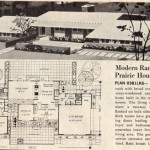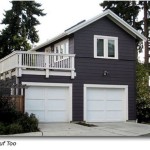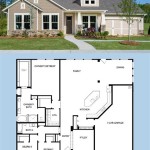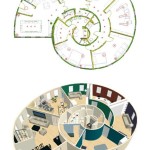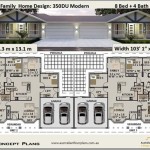Kitchen Plans With Dimensions: A Comprehensive Guide
Planning a new kitchen or renovating an existing one involves a multitude of considerations, from aesthetics and functionality to budget and size. One crucial element often overlooked is the creation of detailed kitchen plans with accurate dimensions. These plans serve as the foundation for a successful kitchen project, ensuring everything fits perfectly and flows seamlessly. This article provides a comprehensive guide to kitchen plans with dimensions, outlining essential aspects and benefits for informed decision-making.
Why Are Kitchen Plans With Dimensions Important?
Accurate kitchen plans with dimensions offer numerous advantages throughout the design, construction, and furnishing process. They provide a visual representation of the kitchen space, aiding in visualizing layouts, optimizing functionality, and avoiding potential issues. Key benefits include:
- Accurate Material Ordering: Detailed plans ensure precise measurements for cabinets, countertops, appliances, and other fixtures, minimizing waste and ensuring a perfect fit.
- Efficient Layout Planning: Visualizing the kitchen layout with dimensions allows for strategic placement of appliances, cabinets, and workspaces, maximizing efficiency and functionality.
- Preventing Design Errors: Plans with dimensions highlight potential conflicts between fixtures, ensuring adequate clearance for movement and preventing costly mistakes during construction.
- Cost-Effective Budgeting: Accurate measurements facilitate precise material estimations, minimizing overspending and allowing for realistic budgeting.
- Smooth Installation Process: Detailed plans simplify the installation process for contractors, facilitating a seamless and efficient workflow.
Essential Elements of Kitchen Plans With Dimensions
Creating comprehensive kitchen plans with dimensions requires meticulous attention to detail and understanding of essential elements. The following components are crucial for a successful plan:
1. Kitchen Layout
The layout defines the arrangement of appliances, cabinets, and workspaces. Common kitchen layouts include:
- Galley Kitchen: Two parallel walls with cabinets and appliances on both sides. Ideal for smaller spaces.
- L-Shaped Kitchen: Two walls forming an L-shape, with cabinets and appliances on both sides. Offers flexibility and open space.
- U-Shaped Kitchen: Three walls forming a U-shape, with cabinets and appliances on all sides. Provides ample storage and workspaces.
- Island Kitchen: A central island with cabinets, appliances, or a countertop offering additional storage and workspace.
- Peninsula Kitchen: A countertop extension from the main countertop, offering additional workspace and seating.
2. Cabinet Dimensions
Cabinet dimensions are crucial for determining the size and quantity required for each area. Include:
- Cabinet Width: The width of each cabinet, measured in inches or centimeters.
- Cabinet Depth: The depth of each cabinet, measured in inches or centimeters.
- Cabinet Height: The height of each cabinet, measured in inches or centimeters.
3. Appliance Dimensions
Accurate appliance dimensions are essential for ensuring proper fit and clearance. Include:
- Refrigerator: Width, depth, and height, including door swing.
- Oven: Width, depth, and height, considering oven door opening.
- Dishwasher: Width, depth, and height, ensuring proper clearance for loading and unloading.
- Microwave: Width, depth, and height, considering placement above or below countertops.
- Cooktop: Width, depth, and height, ensuring proper ventilation and clearance.
4. Countertop Dimensions
Countertop dimensions dictate the size and shape of work surfaces, including:
- Countertop Length: Total length of the countertop, measured in inches or centimeters.
- Countertop Width: The width of the countertop, measured in inches or centimeters.
- Countertop Thickness: The thickness of the countertop, measured in inches or centimeters.
5. Sink and Faucet Dimensions
Sink and faucet dimensions ensure proper placement and functionality. Include:
- Sink Length: Overall length of the sink, measured in inches or centimeters.
- Sink Width: Overall width of the sink, measured in inches or centimeters.
- Sink Depth: Depth of the sink bowl, measured in inches or centimeters.
- Faucet Height: Height of the faucet from the countertop, measured in inches or centimeters.
- Faucet Reach: Distance the faucet extends from the countertop, measured in inches or centimeters.
6. Lighting Considerations
Lighting is crucial for functional and aesthetic purposes. Include:
- Light Fixture Placement: Indicate the location of all light fixtures, including ceiling lights, under-cabinet lights, and pendant lights.
- Light Fixture Dimensions: Include the width, height, and depth of each light fixture.
7. Electrical Outlets and Switches
Accurate placement of electrical outlets and switches is essential for appliance and lighting functionality. Include:
- Outlet Location: Mark the location of each outlet, ensuring adequate spacing and accessibility.
- Switch Location: Indicate the location of each switch, ensuring easy access and proximity to controlled fixtures.
Tools and Resources for Kitchen Plans with Dimensions
Various tools and resources are available to assist in creating accurate kitchen plans with dimensions. Several options cater to different skill levels and preferences:
1. Computer-Aided Design (CAD) Software
CAD software, such as AutoCAD, Chief Architect, or SketchUp, offer advanced features for creating detailed 2D and 3D plans. They allow for precise dimensions, material specifications, and realistic visuals.
2. Online Kitchen Planning Tools
Several online platforms, such as IKEA's Kitchen Planner, offer user-friendly tools for creating basic kitchen layouts and placing cabinets and appliances.
3. Hand-Drawn Plans
For those with sketching skills, hand-drawn plans with accurate measurements using graph paper and rulers can be effective, though they may require more time and effort.
4. Professional Kitchen Designers
Hiring a professional kitchen designer can provide expert guidance in creating detailed plans, incorporating functionality, aesthetics, and budget considerations.
By understanding the importance, elements, and tools for creating accurate kitchen plans, you can effectively plan and execute a kitchen renovation project, ensuring a functional and aesthetically pleasing space for years to come.

7 Types Of Kitchen Floor Plans With Dimensions Foyr Neo

7 Types Of Kitchen Floor Plans With Dimensions Foyr Neo

Useful Kitchen Dimensions And Layout Engineering Discoveries Cabinet Best Plans

Standard Kitchen Dimensions And Layout Engineering Discoveries Plans Floor Remodeling Projects

Standard Kitchen Dimensions For Your Designcafe

Useful Kitchen Dimensions And Layout Engineering Discoveries Floor Plans Small

7 Types Of Kitchen Floor Plans With Dimensions Foyr Neo

Kitchen And Dining Area Measurements Standards Guide

The L Shape Kitchen Plan With Standard Dimensions By Using Autocad Scientific Diagram

Henry Kitchen Floor Plans Html
Related Posts

